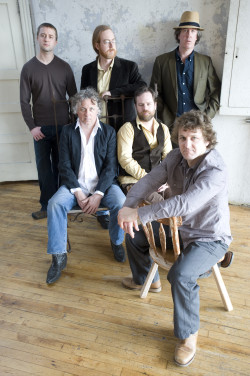
The self-titled album by Head for the Hills opens with "One Foot in the Grave," and its instrumentation and twangy harmonies are classic bluegrass. The next track is "Solar Bowling Shoes," and the title alone is a clue that the Colorado-based band has interests beyond tradition.
But the band really establishes its newgrass credentials on the instrumental "Nooks & Crannies," which -- aside from its eloquent melodies and nimble digressions -- brings in an electric mandolin at the four-minute mark. Its introduction offers a hint of rock-and-roll distortion, and it later adds some feedback, and finally it breaks away from any sense of tradition with a soaring solo. The instrument's use is transcendent, creating a bridge between bluegrass and rock.
The blending of those two genres is of course a hallmark of newgrass, and Head for the Hills -- performing March 19 at RIBCO -- is particularly adept at farming that expansive middle ground. There's nothing else on the album as quintessentially bluegrass as "One Foot in the Grave," and there's nothing as nontraditional as "Nooks & Crannies," but the remainder of the album is a testament to the band's alchemic skills.

 Railroad Earth mandolin player John Skehan notes that most recording studios are set up so that even when musicians are isolated from each other in separate rooms, they can see each other.
Railroad Earth mandolin player John Skehan notes that most recording studios are set up so that even when musicians are isolated from each other in separate rooms, they can see each other.







